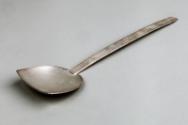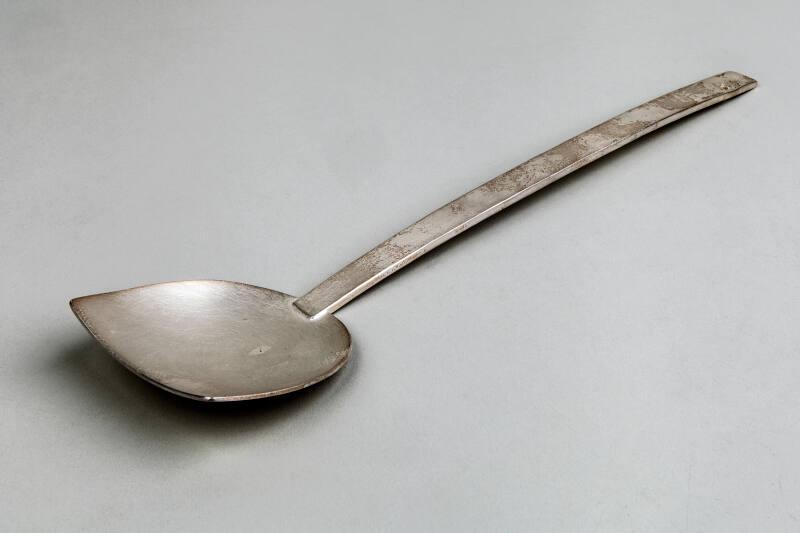Matt Silver Spoon
MakerMade by
Simone Ten Hompel
(Bocholt, Germany, born 1960)
Date2003
Object NameContainer
Mediumsilver
ClassificationsApplied Art
Dimensions65 × 30cm
AcquisitionPurchased in 2004 with assistance from the National Collecting Scheme for Scotland and the National Fund for Acquisitions.
Copyright© Simone Ten Hompel (2004)
LocationView by Appointment - Aberdeen Treasure Hub
Object numberABDAG011190
Keywords
Simone ten Hompel is one of most innovative makers and teachers working in Britain today. She frequently chooses to work with base metals but has always retained a love of silver. The attraction lies in how the metal can be manipulated and changed and its links with the past as a material that is melted down and used over and over again.
It is this very reworking of the raw material that is the key to her preoccupation with spoons. She has spoken of her fascination of the story that when a family fell on hard times the silver spoons were melted down or used as currency. For ten Hompel this is simply another way in which the spoon nourishes the family, not just as a vehicle for taking food from the plate to the mouth.
This group of spoons is minimalist in character. The shape and outline of the individual pieces become their ornament, especially when grouped together. Each spoon has a variation in design – the shape of bowl, the cut-out slot that embellishes the handle and the formation of the joint between handle and bowl. The surface throughout is matt with a light texturing. The slots in the handles have a practical purpose – they can be used to suspend the spoons, like a row of musical notes. Ten Hompel breaks rules and habits, in this case the notion that flatware must sit flat on the table.
More About Me
This German-born artist claims metal as her first language and always carries with her a silver spoon to stir her coffee and a pencil contained within its own silver case.

















